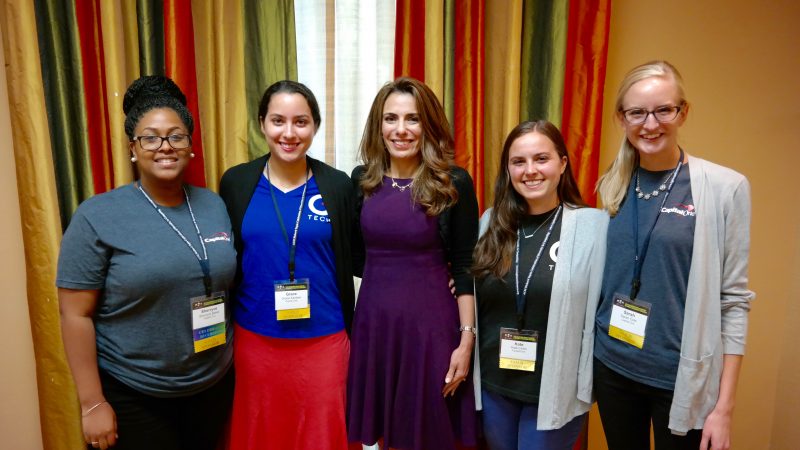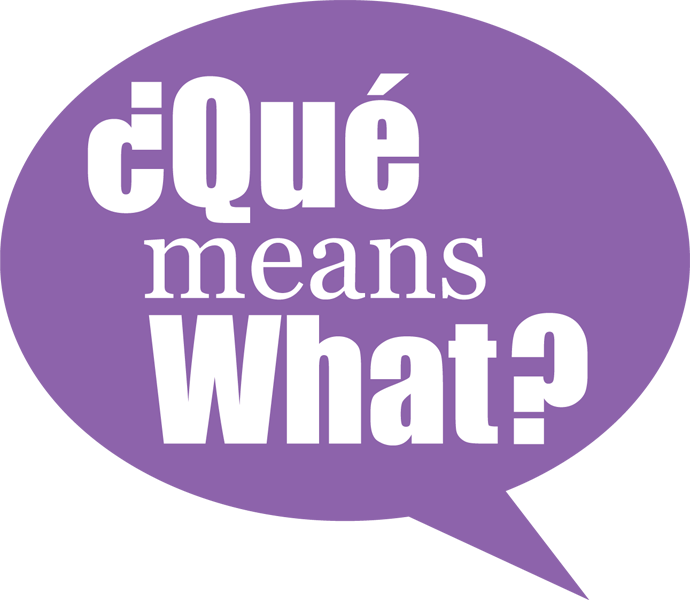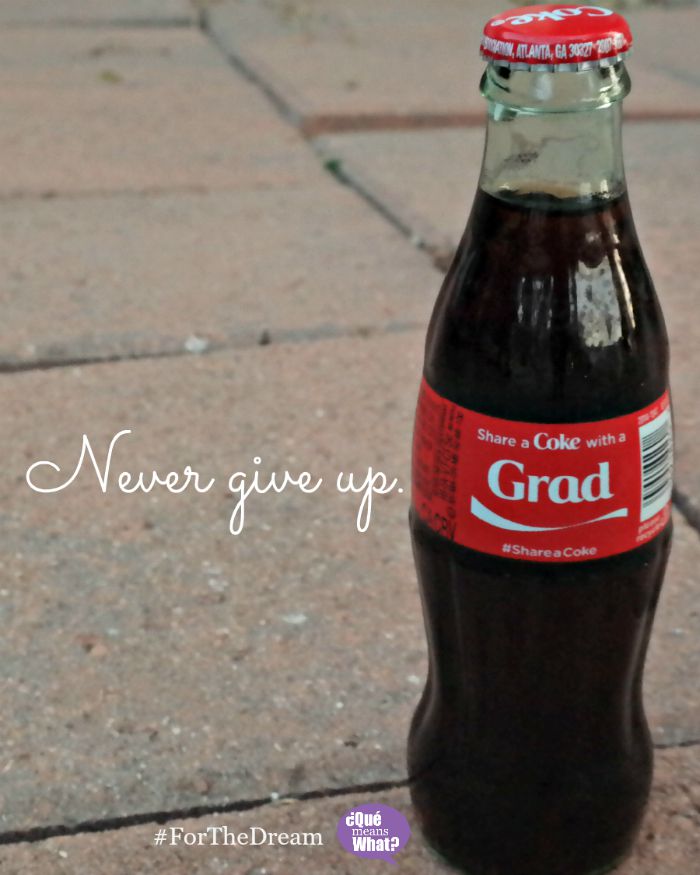This post is part of a sponsored collaboration with Capital One. All opinions are my own.
When I was invited by Capital One to attend the 2016 Tapia Conference, I was excited for the opportunity to spend a few days with a group of people who were also invested in diversity and inclusion in STEM fields. However, I could not have imagined what I was about to experience. New to the Tapia Conference, I learned a lot about computing, diversity and inclusion. I was introduced to fields of study and research centers that I didn’t know existed. My level of understanding diversity and inclusion was challenged (and has been expanded).
DIVERSITY MATTERS!
The Tapia Conference is a special conference. It is a place not just for learning and networking but for truly celebrating diversity in computing. That is not just a tagline. I’ve been to my share of conferences for diversity and I’ve honestly, never experienced something like 2016 Tapia Conference. Diversity here goes beyond check marks on a list — it includes people of all ethnicities, skin color, ages, genders, sexual orientation, people with disabilities, and more. The community that attends the Tapia Conference doesn’t just understand that diversity and mentorship are key in success but they live it.
I attended one session on unconscious bias and the conversations were direct. There have been few experiences where I witnessed such frank conversations. Questions were asked directly and responses were given honestly. Only when a group can be so open can real change begin. Maybe the participants aren’t able to have such frank conversations elsewhere. Either way, the Tapia Conference community provided the space for real questions and answers about how to act and step in as allies to ensure everyone experiences an inclusive culture.
STUDENTS/MENTORSHIP
The Tapia Conference also awards scholarships and offers a doctoral consortium as part of the conference. A lot of my time at the conference was spent talking with undergraduate and graduate students.
I met Denae and Brittany, graduate students from North Carolina State University who would participate in the Doctoral Consortium to discuss their dissertations. Denae’s topic is on how gender roles affect the way students share information online. Brittany’s topic is on how developers use the tools that are developed for specifically for them. Those are very simplistic descriptions of what they each explained to me. I had to ask a lot of questions to begin to understand the important work they are doing. It’s work that’s beneficial to so many.
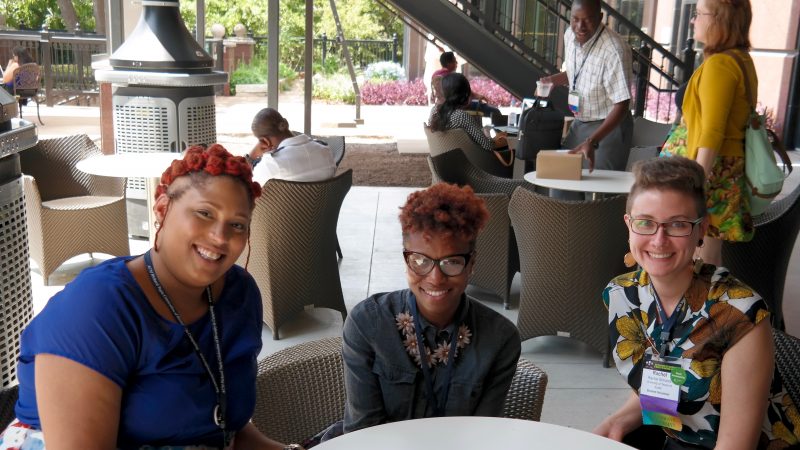
I also met Quentarius and Christopher, computation chemistry graduate students from Jackson State in Mississippi. I didn’t even know computation chemistry existed. These two have leaned on each other throughout their studies. In fact, Christopher called Quentarius and encouraged him to return to school to earn his master’s degree. They are both committed to seeing each other all the way through their doctorate degrees.
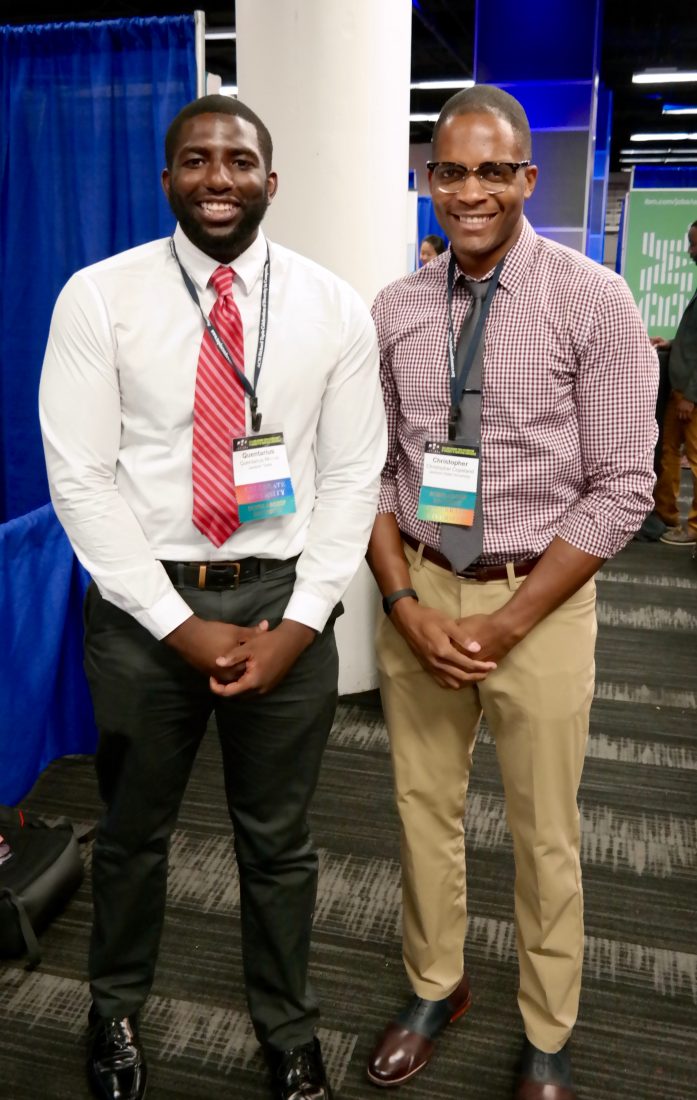
The idea of mentorship is nothing new to me. In fact, I preach about it often. The Tapia Conference reaffirmed what I already knew about mentorship. Mentors – good ones — are necessary for higher education success and your overall career success. From the many other students that I talked to, it was not difficult to detect which ones had great mentors and which ones didn’t have one at all. This conference was a great place to find one, though.
DR. RICHARD TAPIA’S SPEECH
Even though this conference is named after Dr. Richard A. Tapia, he had never given the banquet keynote speech until this year. He told the organizers that this year ‘he had something to say’. He shared a heartfelt story about him and his wife and the adversity they faced with is wife’s debilitating disease and the death of their daughter.
“When you encounter obstacles and adversity, learn to look both ways.”
“The only choice we have is to play the hand we were dealt.”
Dr. Tapia powerfully stated that he knew, as the first Hispanic to be in the National Academy of Engineering and the first Hispanic to receive the National Medal of Science, he has a platform and his must use it. He noted that minorities are two-sided role models — to the youth and to the majority.
“We must show them that excellence comes in all flavors.”
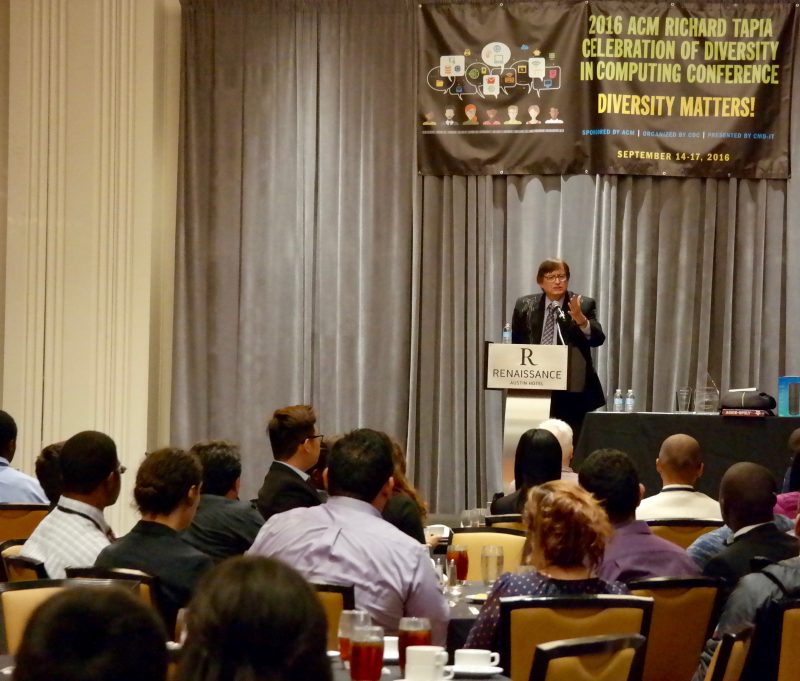
He encouraged the audience to maintain a good balance between outreach and research. There is no solid platform to impact outreach or change is there is not good research.
His words were powerful and incredibly meaningful to so many people in the room. One tidbit about this conference was that Dr. Tapia had his own booth at the career expo so that attendees could sign up and have their photo taken with him. And then he signed each one. It was a real rock star touch!
In the spirit of diversity and inclusion, Dr. Richard A. Tapia said, “We need the full support of the entire community. We can’t do it on our own. We need help from everyone.”
CAPITAL ONE
Volunteers and sponsors answered the call to help. Tapia Conference is sponsored by some of the nation’s largest technology companies like Microsoft, Dropbox, Facebook and Google. So, if this is a tech conference, then what is a bank doing here? Capital One is a digital leader in their industry. Their innovative processes to transform how customers interact with their bank is all powered by technology. So, naturally, Capital One is invested in technology and computing students of today.
“Diverse teams build amazing products,” Meghan Welch, Capital One Chief Diversity and Inclusion Officer, said in the plenary panel Shifting the Paradigm: A Dialogue with Chief Diversity Officers.
[Tweet “Diverse teams build amazing products. Meghan Welch, @CapitalOne”]
Capital One not only understands that diverse teams are important, they accept their responsibility in providing resources to educate students so they will have the skills to fill the positions on these teams. In the video, Welch talks about the Future Edge – the initiative, through which the Capital One will focus $150 million over 5 years to help more Americans succeed in a digital economy.
Women in Tech is another initiative that Capital One launched within their company to provide a peer support network for women in tech positions. It is important to Capital One to create an environment in which their employees can thrive.
“The more diverse a team is — having a woman on it is on to eh the diversity aspects — it becomes a lot more creative and productive,” said Dalia Soliman-Powers, Former VP of Software Engineering, Capital One.
[Tweet “The more diverse a team is, it becomes a lot more creative and productive. Dalia Soliman-Powers, @CapitalOne”]
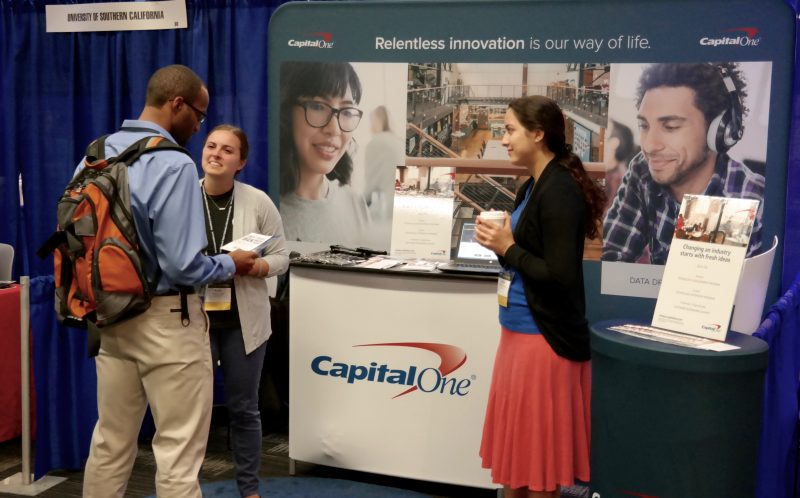
WHY DIVERSITY AND INCLUSION IN STEM SHOULD MATTER TO YOU
Queridos, we either know the student or we are the student who is passionate about science, technology, engineering or mathematics. The most important thing that we can do for this person is to encourage them to not give up.
The future of our country largely depends on a diverse workforce who is skilled in STEM education fields. The pipeline begins right where you are. There are key elements and players like you from elementary education all the way through post-graduate education and on to corporate partners. Without our diverse workforce, who will create the solutions we each need for our specific communities?
Look to leaders around you like innovators at Capital One or student mentors like the ones I met at this conference – this is the community who are on team diversity and inclusion!
How do you make diversity and inclusion a priority?